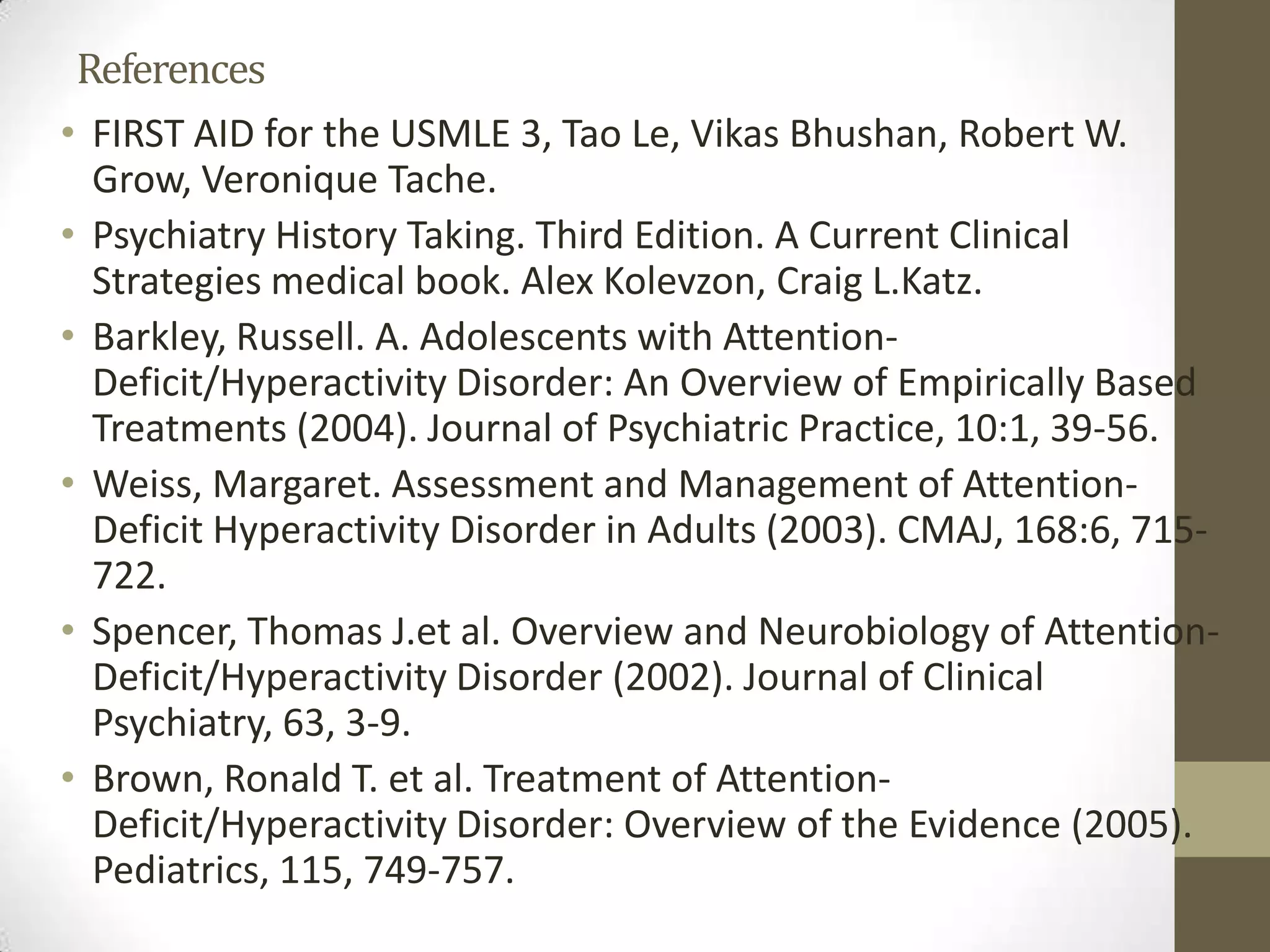Attention-Deficit/Hyperactivity Disorder (ADHD) is characterized by inattention, hyperactivity, and impulsivity, affecting 3%-10% of children and 1%-6% of adults in the U.S., leading to significant impairment in various aspects of life. Diagnosis involves assessing current ADHD symptoms, childhood history, and functional impairment in multiple settings, with clinical criteria established according to DSM-IV guidelines. Treatment includes education, psychological support, and medication, primarily stimulants, with careful monitoring for potential side effects.













